Celebrated Polish filmmaker Agnieszka Holland has begun production on her latest project, a biographical look at Franz Kafka.
This news comes after months of pre-development, with cameras officially rolling in April 2024.
Titled “Franz,” the movie will delve into the life of the iconic writer, weaving a narrative tapestry from his birth in late 19th century Prague to his passing in Berlin decades later.
Filming is primarily taking place in the heart of Prague, with locations chosen in Malá Strana and Old Town, areas close to Kafka’s birthplace in 1883.
The screenplay, co-written by Holland and Czech collaborator Marek Epstein, aims to provide a fresh perspective on Kafka.
Rather than a straightforward biography, the film promises a “kaleidoscopic mosaic” that incorporates not only factual elements but also interpretations and even glimpses into Kafka’s dreams and inner world, gleaned from his letters.
German-Jewish actor Idan Weiss takes on the task of portraying Kafka in his feature film debut, as confirmed by casting information reported in Variety. Filming in Prague is expected to continue until May, with additional scenes planned for locations in Germany.
“Kafka was a man of great sensitivity and ill-suited to his time,” says Holland. “We have a much better chance of understanding him today than his peers had a century ago. He was the soul of the third millennium: a man living mentally largely outside the reality of his body, living in the world of letters as intensely as today’s man is living his life on social networks.
“To understand Kafka, we want to carefully piece together fragments from Kafka’s past and creation to create a mosaic beyond not only his life toward the present, but also to create a comprehensive view of the dramatic world of Kafka’s imagination.”
Kafka, a German-speaking Jewish Bohemian famous for surrealist and nightmarish visions, was behind such enduring works as “The Metamorphosis,” “The Trial” and “The Castle.”
This production comes just ahead of the 100th anniversary of Kafka’s death on June 3, 1924. Throughout 2024, Prague will be hosting various events to commemorate this literary giant.
Would you like us to write about your business? Find out more
The Czech Philharmonic Orchestra invites you to an unforgettable open-air concert on Wednesday, June 26, 2024, at 8:15 PM, at the Prague Castle.
Under the baton of conductor Petr Altrichter, the orchestra will feature works by Czech composers like Antonín Dvořák, Bedřich Smetana, Zdeněk Fibich, and Vítězslav Novák.
The concert, lasting approximately 70 minutes, will start at 8:15 PM on Hradčanské náměstí.
The Czech Philharmonic Orchestra, founded 128 years ago in Prague, stands as the nation’s most revered symphony orchestra.
In 2008, it was ranked among the top 20 orchestras in the world by Gramophone magazine.
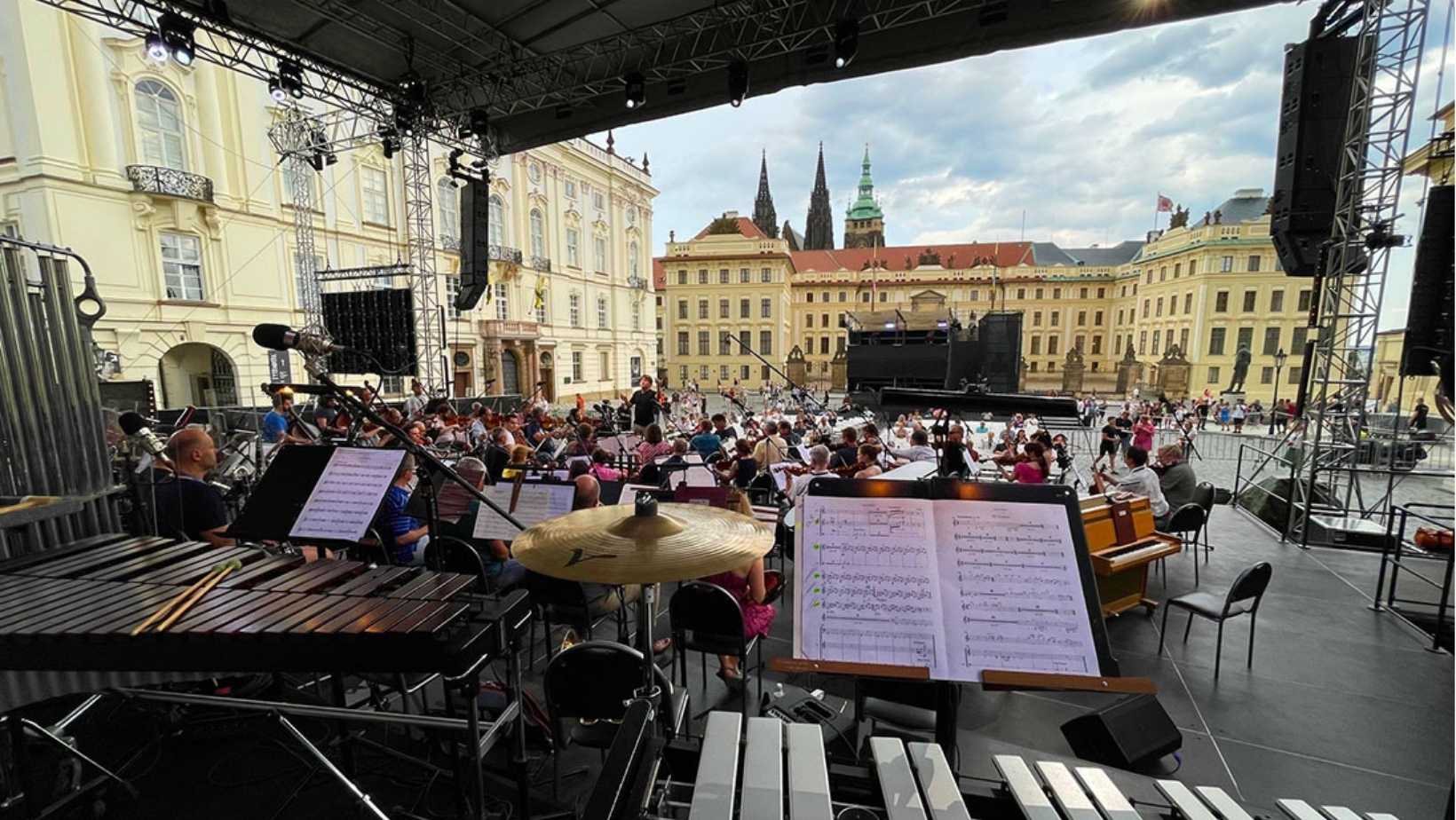
Here’s the full program:
Antonín Dvořák:
Slavnostní pochod, op. 54a (6′)
Slovanský tanec č. 7 c moll, op. 46 (3′)
Rondo pro violoncello a orchestr g moll, op. 94 (8′)
Pekelný tanec z 2. dějství opera Čert a Káča (4′)
“Od dětství ku oltáři”, árie Svaté Ludmily z oratoria Svatá Ludmila (4′)
“Když mne stará matka”, píseň z cyklu Cigánské melodie, op. 55 (2′)
Zdeněk Fibich:
Poem ze selanky V podvečer, op. 39 (5′)
Bedřich Smetana:
“A ty mé robě”, ukolébavka z 1. dějství opery Hubička (4′)
“Já ale zůstanu”, árie Přemysla z 2. dějství opery Libuše (3′)
Furiant z 2. dějství opera Prodaná nevěsta (2′)
Vítězslav Novák:
U muziky, 4. část ze Slovácké suity pro malý orchestr, op. 32 (4′)
Antonín Dvořák:
“Jářku, jářku, klouče milé…”, duet Hajného a Kuchtíka z 2. dějství opera Rusalka (4′)
Would you like us to write about your business? Find out more
Prague hoteliers are celebrating record guest numbers during the traditionally slow winter months. Occupancy rates reaching 90% paint a clear picture: Prague is shedding its seasonal skin, attracting tourists year-round.
This positive development is echoed in a press release by Czech Inn Hotels, citing data from consulting firm STR for January. The report reveals a surge in winter tourism, effectively erasing the city’s usual seasonality.
January sales soared by nearly 24% year-on-year, placing the Czech Republic fourth in Europe behind Turkey, Malta, and Russia (Germany ranked fifth).
“Thankfully, the trend in occupancy and costs is optimistic,” says Jaroslav Svoboda, owner of Czech Inn Hotels. “However, let’s not get carried away; we’re still far from 2019 pre-pandemic levels.”
This “happy surprise,” as Svoboda calls it, has disrupted the traditional off-season. January typically sees a significant drop in occupancy, but this year, the decrease compared to other months was much smaller. In fact, Prague hotels saw a 10% year-on-year increase in occupancy.
“We were expecting extensive renovations during the off-season,” Svoboda admits, “but instead, we’re seeing 90% occupancy at some hotels. It creates logistical challenges, but ultimately, it’s a welcome surprise.”
The Czech Statistical Office (CSO) also confirms the trend. In the fourth quarter of 2023, 4.7 million guests visited the Czech Republic, an 8.5% year-on-year increase. Over 22 million guests stayed in Czech hotels last year.
“While the summer season was positive,” says Roman Mikula, head of the Tourism and Environment Statistics Department at CSO, “the fourth quarter didn’t quite surpass 2019 levels. The total number of arrivals and overnight stays fell short. However, there’s a bright side: domestic tourism flourished, with residents making up almost half of all guests, compared to less than a third pre-pandemic.”
The composition of guests has also shifted. Germans, Slovaks, and Poles are now the most frequent foreign visitors. “Austrians are a rare sight,” explains Svoboda, “due to the lack of a direct motorway connection, making the journey time-consuming by train.”
“We miss guests from further afield, particularly Asians and Americans. Hopefully, this will change in the coming years.”
Menzies Aviation has installed almost 900 solar panels on its 14,000m2 cargo facility and a neighboring administrative building at Prague Airport – which will reportedly save almost 140 tons of CO2 each year.
The panels are set to produce more than 350MWh annually and reduce emissions across Menzies’ Prague operations by 25%.
Electricity being generated by the solar panels is being used to power operations at the warehouse and charge Menzies’ fleet of electric ground support equipment.
Katy Reid, head of sustainability and corporate responsibility at Menzies Aviation, said: “Building a fair and sustainable future is a key priority for Menzies, which is why we’re working hard to achieve the ambitious targets set out in our All In sustainability plan. The installation of nearly 900 solar panels at Prague Airport is just one example of how we’re matching our ambition with action by taking practical steps to slash emissions and meet our net zero targets.”
Soňa Hykyšová, sustainability, environment and ESG director at Prague Airport, added, “We are glad that Menzies Aviation is also trying to reduce emissions and, like Prague Airport, is committed to net carbon neutrality. Last year, we achieved a 59.5% reduction in emissions compared with 2009. We expect to reach carbon neutrality by 2030 and net carbon neutrality by 2050.”
“However, we know that the road ahead is not easy. Roughly 85% of emissions are generated by third parties – i.e. our suppliers and airlines. Therefore, we also motivate them to reduce emissions, for example, by offering green electricity. We are also active in this direction and plan to expand the use of photovoltaic panels on more suitable buildings at the airport.”
Residents of Prague 5 have raised concerns about the presence of drug users in certain areas. In response, the district plans to deploy trained outreach workers starting in April to address potential issues and offer support.
Prague 5 Mayor Radka Šimková (Praha Sobě) announced the initiative, highlighting the need for “professionals with the necessary training to communicate with drug users, de-escalate tense situations, and assess the need for further intervention, such as medical attention or social services.”
The district will issue a tender seeking organizations with relevant experience to provide at least two workers, with the possibility for more depending on proposals.
The program will initially focus on Na Skalce Park in Smíchov and Husovy Sady in Košíře, areas identified as experiencing an increased presence of drug users. However, the initiative remains flexible, with Šimková stating,
“We have conditions that allow us to change locations as needed to address emerging concerns.” Residents of Barrandov have also recently voiced concerns, and the program may expand to include their community.
Beyond engaging with drug users and offering support, the outreach workers will also monitor public order and address cleanliness concerns. Depending on their training, they may alert authorities to discarded needles and syringes or dispose of them safely themselves.
The initiative comes amid ongoing discussions about Prague’s broader approach to drug use.
Last year, Prague 5 closed a contact center for drug users on Mahenova Street, leaving only the Sananim center on Na Skalce Street and the controversial substitution treatment clinic on Bieblova Street operational in the district.
Experts have long emphasized the importance of accessible and evenly distributed contact centers offering harm reduction services, including injection equipment exchange and medical or psychological help. Since 2009, several such centers in Prague have closed, leaving only two operational.
However, there is hope for change. The current city hall coalition has appointed former mayor and addiction specialist Pavel Bem (ODS) to lead the commission on tackling drug-related challenges, and he is actively seeking new locations to expand the network and improve accessibility across the city.
Have you heard about the Vietnamese district in Prague called SAPA or Prague’s “Little Hanoi”?
It is a genuinely different world with authentic Vietnamese food, Buddhist temple, and street vendors. Let’s explore more what this place can offer to one-day visitors.
What is SAPA in Prague
You might already notice that we don’t have any cultural districts in Prague, referring to inhabitants from different countries. The only exception is the Vietnamese district on the outskirts of Prague.
Vietnamese are the third-largest minority of foreigners in Prague, just after Ukrainians and Slovakians. Vietnamese came to former communist Czechoslovakia for work and studies. With the fall of communism in 1989, the majority of them decided to stay and made the Czech Republic their permanent home.
SAPA became a cultural and trading district of the Vietnamese community in Prague around 2000 when the former poultry farm closed and the whole compound became available.
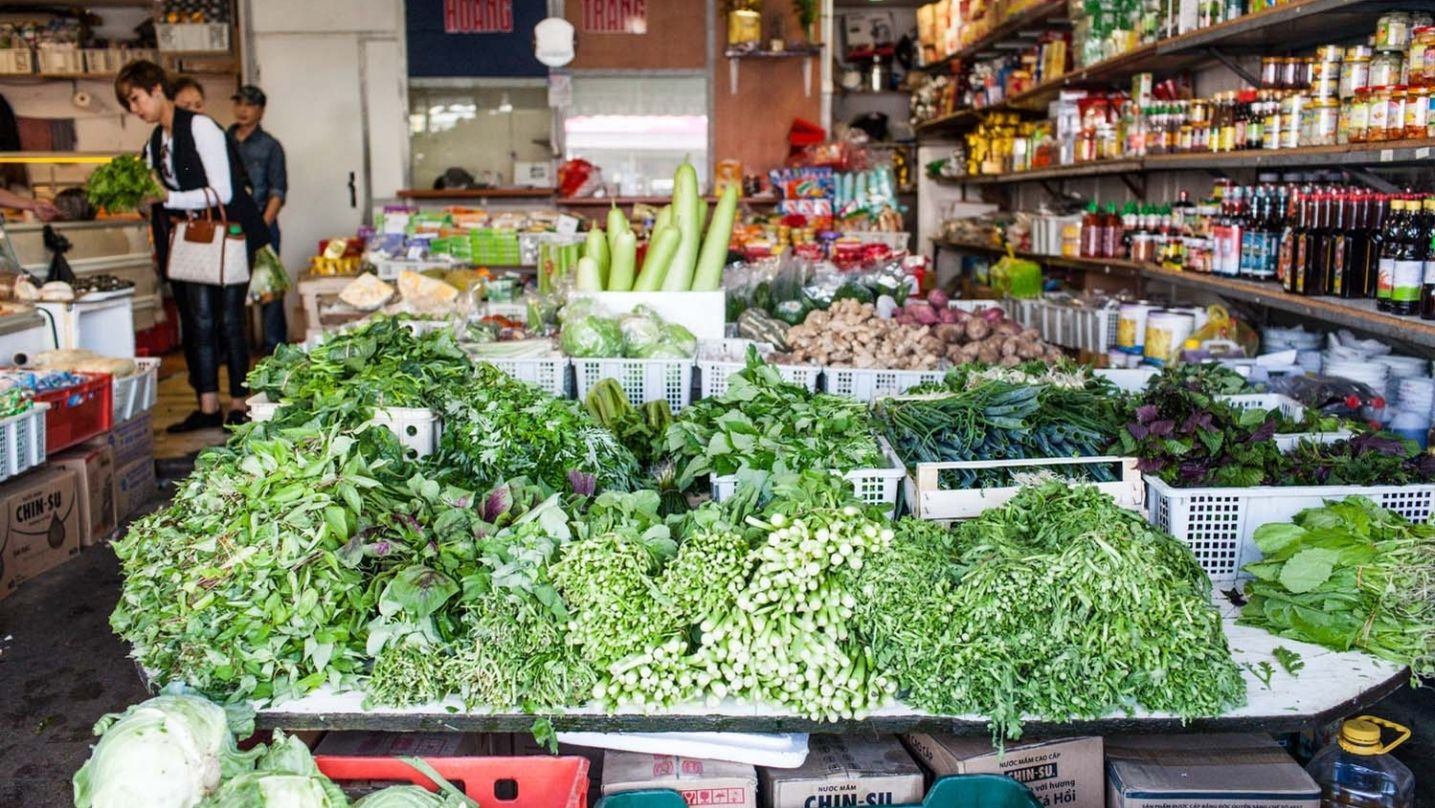
It is not particularly nice, but it is an interesting place to visit. SAPA is called by media as “city inside the city,” where you can find many authentic Vietnamese restaurants, food stands, specialized grocery stores, but also schools, places for various social events and weddings, and of course, the Buddhist temple.
Explore Little Vietnam
SAPA is an excellent place for food lovers. It does not matter if you would prefer to eat authentic Vietnamese food in a restaurant, order something quickly in a street stand, or shop a grocery for your culinary experiments back home.
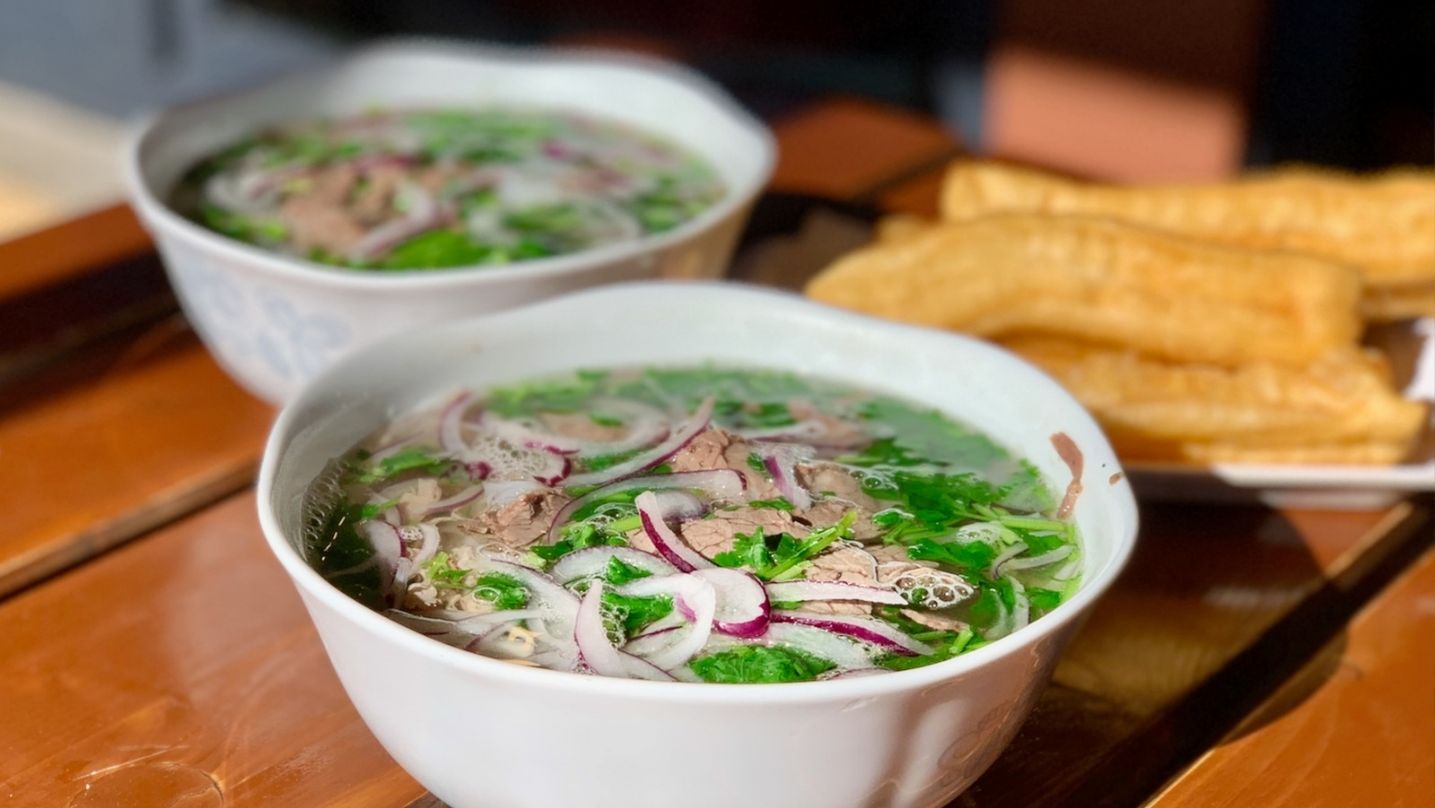
What you should not miss is the traditional Vietnamese coffee with condensed milk at the bottom. Do you know that Vietnam is the second-largest producer of coffee just after Brazil?
Vietnamese coffee beans are mostly Robusta beans with cocoa or chocolate flavors, so definitely worthwhile to try. You can buy it easily from street vendors for about 30 CZK (about 1 EUR). You can have it with a wide choice of traditional Vietnamese snacks that you won’t find anywhere else in Prague.
If you would prefer to shop for unusual Asian ingredients for your cooking at home, SAPA is the right place where to find it. You can find here various rice noodles, cilantro, fish sauce, sweet potatoes, dried mushrooms, durian, and many others.
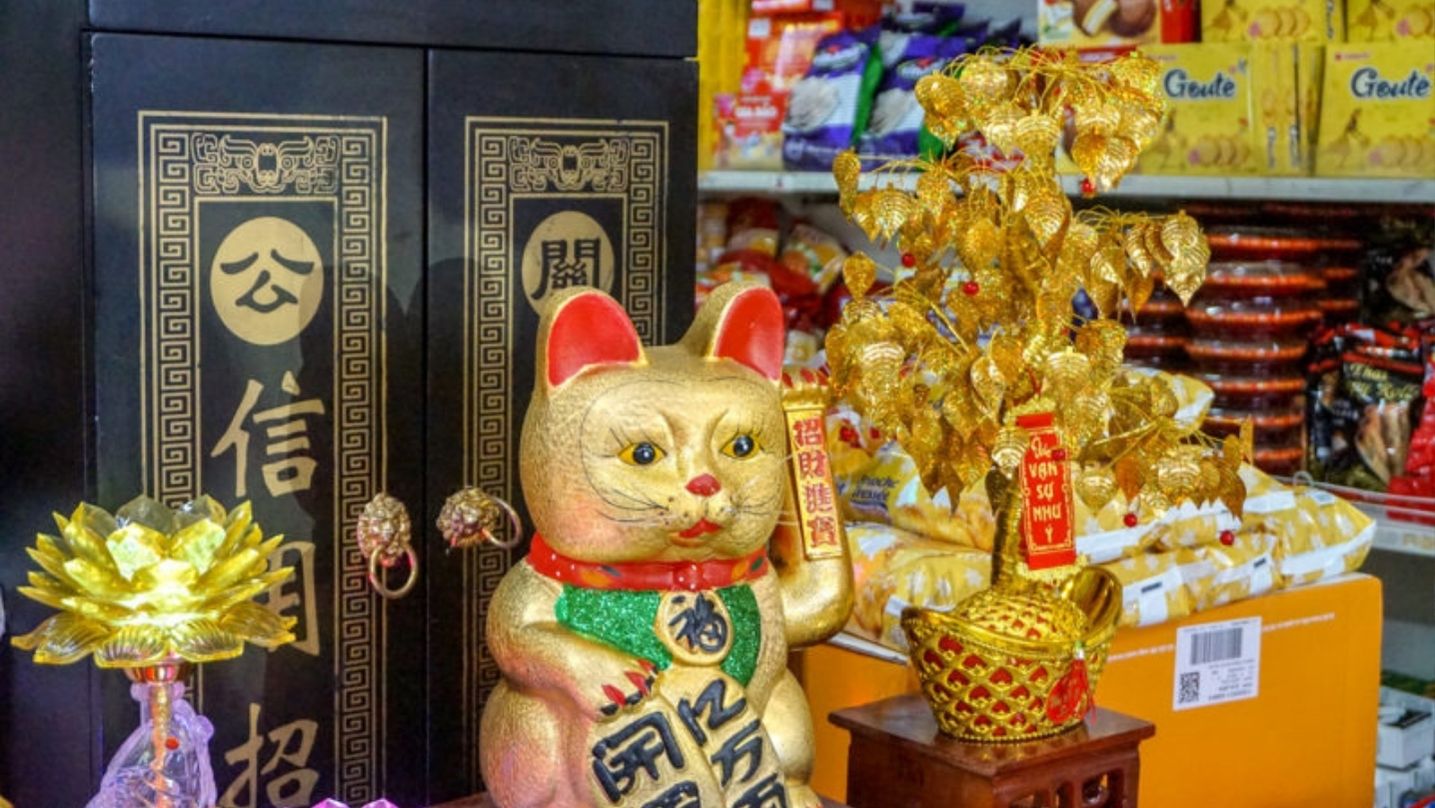
The majority of products are transported right from Asia since the SAPA market serves as the main transit area for the whole of Eastern Europe. Besides the Vietnamese specialties, you can find here also the Korean market with traditional kimchi, Korean pears, sesame oil, gochujang, or various Korean snacks.
Besides the food, SAPA is also a central place for shopping for products made in Asia. You can find here various clothing, accessories such as sunglasses, kitchenware, but also Vietnamese books, hair salons, and manicures. Just don’t forget to bargain while shopping here!
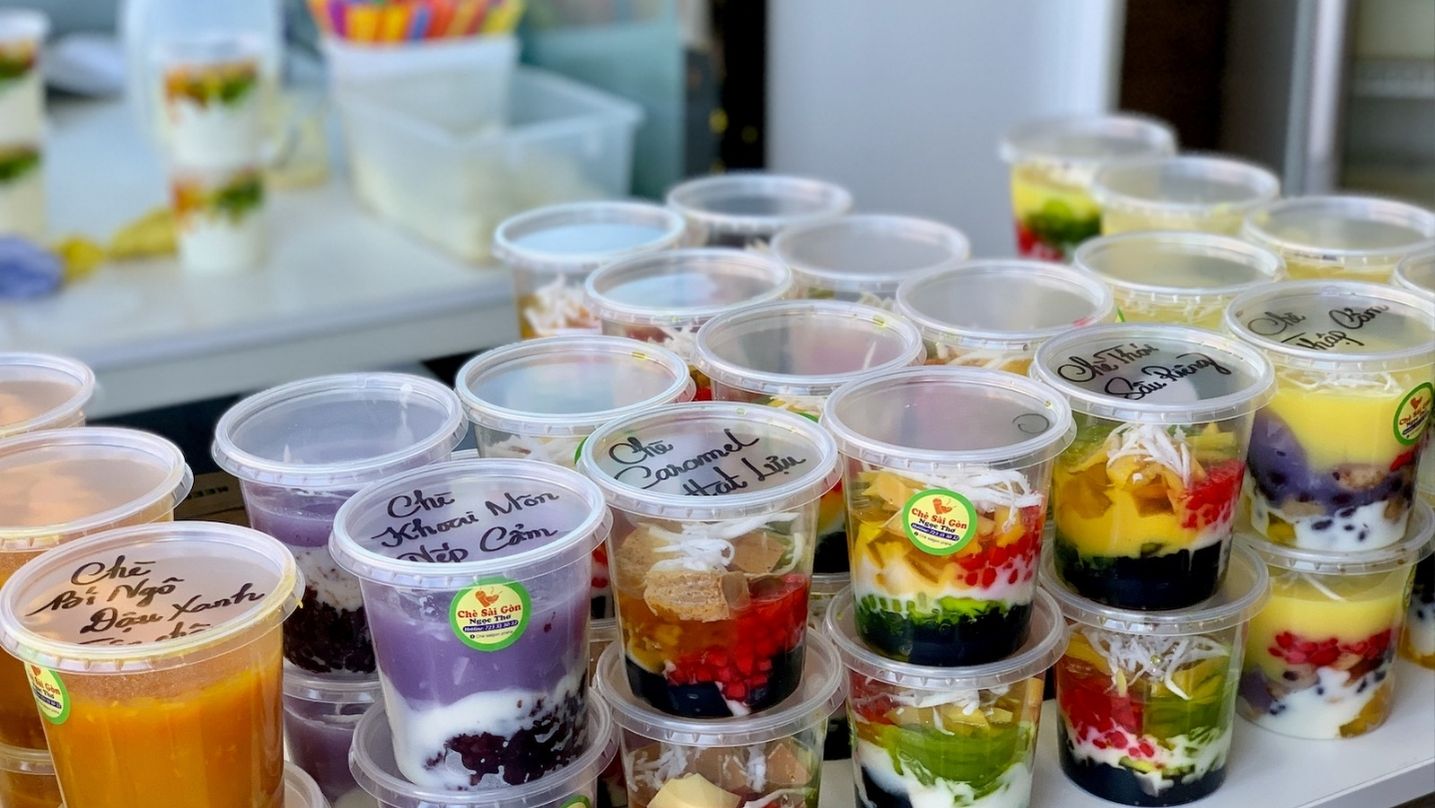
How to get to SAPA
You can find SAPA on the outskirts of Prague. From the city center, you can take a metro red line to metro stop Kačerov, and then bus 113 to Sídliště Písnice. The entrance to SAPA is just in front of the bus stop.
It takes about 30 minutes to get there. Another option is from Smíchovské nádraží (yellow metro line) and take bus 197 directly to Sídliště Písnice. Once you enter the SAPA, you will be in a different world…
In an interview with Czech Radio on Monday, President Petr Pavel underscored the advantages of the Czech Republic adopting the euro, emphasizing its advantages for the country’s export economy and the opportunity to actively shape the future of the eurozone.
Pavel initiated discussions on euro adoption in the country during his New Year’s speech, calling for strategic steps to facilitate the transition.
While Finance Minister Zbynek Stanjura (ODS) currently dismisses the need for immediate consideration, Pavel argues that the Czech Republic’s strong export orientation aligns it closely with eurozone countries.
He suggests that actively participating in eurozone decisions, rather than passively accepting them, would be more beneficial for the nation.
President Pavel also highlighted the Czech Republic’s efforts to meet the Maastricht criteria this year, a prerequisite for joining the eurozone.
He proposed the establishment of a euro adoption officer within the government to demystify the euro debate, emphasizing the need for informed decision-making and long-term public education.
Pavel urged a careful examination of other countries’ experiences with euro adoption, dismissing fears of potential drawbacks and encouraging a more objective understanding of the fundamental political decision ahead.
Who’s in favour, who’s against
The Mayors and Independents and the Pirate Party, said they intend to push for the country to join the ERM exchange rate system next year and for that purpose they would like to see the government appoint a commissioner for euro adoption.
In the ERM system, the crown would be partially pegged to the euro and it is something that all applicants must undergo for a period of two years before the introduction of the common European currency. However, the Civic Democrats, the strongest party in government, have made it clear this will not happen during this government’s term in office.
The Civic Democrats argue that there is no point in entering the ERM system before reaching an agreement on a euro adoption date and this is not the time to discuss the issue. They moreover point out that businesses in Czechia are free to use the euro in their business transactions.
The other two other ruling parties, TOP 09 and the Christian Democrats, say they are committed to adopting the euro, but not in this government’s term in office.
The opposition parties are also against euro adoption and are increasingly vocal on the subject as the European elections draw close. Alena Schillerová, former finance minister and deputy chair of the ANO party, said ANO would definitely go into the elections saying that they do not want the euro.
In 2023, the Czech Republic witnessed a record-breaking 277,000 self-employed individuals terminating their businesses, marking the highest number since 1993, according to data from Imper.
The trend is attributed to economic uncertainties, escalating costs and increased administrative requirements such as mandatory data boxes.
Despite 68,000 entrepreneurs registering anew, mirroring the figures from 2022, the overall termination of businesses reflects a challenging economic environment.
Last year, 14,000 limited liability companies and 4,703 foreign individuals ceased to exist. Associations that ceased to exist were 3,424, and individuals engaged in agriculture also significantly felt the impact with 2,836 entities ending their activities, a notable increase from 812 in 2022
The termination of businesses in 2023 almost matched the previous record set in 1993 when over 278,000 self-employed individuals ended their businesses.
Factors contributing to this record include the dissolution of Czechoslovakia and the legislative prohibition of the “black system,” effective from that year onwards. Throughout the years, the number of terminated businesses varied in the tens of thousands, with exceptions like 2013 when nearly 150,000 self-employed individuals ceased their activities and the post-COVID year 2022.
Tomáš Berger, the director of Imper, pointed out that the peak termination of activities occurred during February and March, coinciding with the introduction of the new obligation of the data box by the state.
This requirement likely served as a significant factor prompting many self-employed individuals to definitively terminate their activities.
Challenges were particularly notable in the restaurant sector with almost 22,000 closures, a significant surge from the previous year’s 6,209 closures. Masonry and locksmithing/toolmaking also experienced notable closures.
While January, was the preferred month to establish new companies, with 115,000 founded in total, entrepreneurs initiated businesses relatively evenly throughout the year.
Prague saw the highest number of new companies, followed by Brno and Ostrava, while Pardubice, Hradec Králové and Ústí nad Labem recorded fewer new businesses.
The breakdown of newly established companies showed that nearly 60 percent were self-employed individuals, followed by 24 percent limited liability companies, similar to the figures from 2022. Associations, communities of unit owners, joint-stock companies and endowment funds were also among the newly formed entities.
Jan Palach Square in Prague could go under a possible transformation. Architects Králíček and Makarov are proposing modernization with an emphasis on history and the memory of the victims.
The main feature will be a 30-meter-high pylon and a memorial site. The new space will connect the past with the future architecture.
A Challenge Beneath
The challenge faced in implementing square modifications stems from underground garages beneath the square, a result of the successful Rudolfinum reconstruction in the late 1980s and early 1990s. Negotiations with private owners are underway to reclaim the square’s central space.
Greenery and Traffic Design
The square’s traffic design envisions reducing car traffic density on Křižovnická Street by implementing charges on passage through Smetana Embankment. This move aims to enhance spatial comfort for pedestrians and promote mass rail and bus transport at the Old Town tram stops.
A Universally Usable Space
Architects envision Jan Palach Square as a universally usable paved area featuring the central pylon for the national flag, a water feature, and a new monument to Antonín Dvořák in front of the Rudolfinum’s entrance facade. This transformation would replace a 1950s unrealized monument, currently standing in front of the Rudolfinum since the 1990s.
The square is named after Jan Palach, a student of the nearby Faculty of Arts, who immolated himself in January 1969 in protest of the 1968 Soviet occupation of Czechoslovakia.
In the southern part of the square stand John Hejduk’s sculptures, the House of the Suicide and the House of the Mother of the Suicide, both in memory of Palach’s brave, albeit tragic act.
It is a historical paradox that the old name of the square – Krasnoarmějců Square – also referred to the arrival of the Soviet army. This though, was an arrival under very different circumstances. The Soviet army helped liberate Prague from the Nazis in 1945.
The name had a symbolic value because during the course of the fighting, the square served as a provisional burial ground for fallen Soviet troops.
So the unwelcome Soviet “brotherly help” in August 1968 not only quashed all hope of the democratization of the Czechoslovak society, but forever discredited the esteem in which Czech society held the Soviet army thanks to the liberation.
IMC Music Club in Česká Skalice, has stirred controversy by imposing a ban on Ukrainians from entering their establishment, citing alleged conflicts and damage incidents.
The club’s operators claim that Ukrainians often engage in fights and have caused damage to the club’s facilities. However, the police report no such conflicts related to Ukrainians at the club.
The ban has prompted a debate with voices both in favor and against such a move. The club operators announced the decision on their Facebook profile, stating that they were forced to implement the ban universally for all Ukrainians after multiple warnings and entry bans due to inappropriate behavior.
The police spokesperson, Eva Prachařová, stated that the Czech Republic police have not recorded any conflicts involving Ukrainians in connection with the club and are not currently taking any action on the matter.
The Czech Trade Inspection is set to address the situation and spokesperson František Kotrba suggests that the ban may constitute discrimination.
The Inspectorate for the Hradec Králové and Pardubice regions has received several submissions on the matter and will investigate promptly.
Critics question the club’s ability to verify the nationality of those entering and former mayor and organizer of major festivals, Petr Fejfar, expresses skepticism, drawing parallels to past restrictions.
The method of enforcing the ban remains unclear, raising concerns about potential discrimination based on accents or identification checks.
The club is located near the Česká Skalice train station, opened in October and has become a gathering place for people from surrounding areas.
While the situation is described as average by local police, the ban has sparked discussions about its legitimacy and implications for inclusivity.
From January 2024, the Czech Republic will witness a reduction in VAT on food products, dropping from the current 15% to 12%.
Back in August, retailers assured the government that this decrease would be transparently reflected in final prices, bringing relief to shoppers.
However, on Monday, December 4th, Tomáš Prouza, President of the Union of Trade and Tourism of the Czech Republic, revealed that there will be no reduction in food prices; instead, they are set to rise significantly in the new year.
Prouza clarified, “We find ourselves compelled to raise prices. Producers have alerted us to a 10-15% increase in the cost of products. The decision by the Energy Regulatory Office of the Czech Republic will substantially escalate their electricity costs, and the government has declined assistance. A 3% VAT reduction won’t bridge this gap.”
Disappointment marked the Minister of Agriculture’s response to the meeting. Vyborný expressed his disillusionment, stating, “Retail chain representatives assured me that the VAT reduction would genuinely impact food prices. Today, I am disheartened to hear that prices will surge from January 1st.”
He pressed retail chain representatives at the meeting about the higher cost of products in Czech supermarkets compared to neighboring countries.
Unfortunately, a clear answer was not forthcoming. “Even the VAT difference fails to explain why products in Czech supermarkets are 70% more expensive than in Poland. The practice of retailers selling some products with mark-ups of several hundred percent is unacceptable. I struggle to comprehend selling a kilo of carrots for CZK 9.3 and retailing it for CZK 27.9 – a staggering 261% mark-up.”
Vyborný stressed that neither his department nor the government possesses legislative tools to intervene in the market and influence pricing.
Instead, he intends to exert informal pressure on retail chains and encourage the Office for the Protection of Competition to take a more active role.
According to the head of the Ministry of Agriculture, there are no objective grounds for the rise in product prices.
He cited the example of Madeta, the largest Czech producer of dairy products, which announced a 3-5% price increase last week due to rising electricity and fuel costs, despite a significant decrease in wholesale milk prices.
Heavy snowfall is causing problems around Czechia. Many smaller roads are impassable and a heightened number of accidents are complicating traffic along the country’s main highways.
A state of emergency is in place in the South Bohemia region which had 75 centimeters of fresh snow overnight. Power outages have left thousands of people without heating.
Train services were halted in various parts of the Czech Republic, mainly due to trees falling on tracks or switches breaking down.
The South Bohemia region experienced most of the reported issues, affecting sections like Tábor – Pelhřimov and Ražice – České Budějovice. Snowfall also disrupted several fast train connections.
The Vysočina region also reports severe complications and drivers have been advised not to set out for the mountain regions if possible. Although road maintenance workers are out in force, the situation is complicated by fresh snow which should continue falling throughout the day.
Between 30 and 40 centimeters of fresh snow are expected to fall in southern Bohemia and Moravia, Prague should see between 15 and 30 centimeters of fresh snow on Saturday.
A truck accident on D1 towards Brno caused a 20-kilometer traffic jam. Radek Mátl, director general of the Czech Roads and Motorways Directorate, expressed the struggle to keep the roads passable despite extensive efforts.
Various regions experienced additional problems.
In Central Bohemia, police responded to a collision on the I/3 road near Pětihost, resulting in a road closure. Western Bohemia faced slushy snow on the D5 near Plzeň, leading to accidents and road closures. In the Hradec Králové region, the D11 motorway experienced slushy snow or ice.
